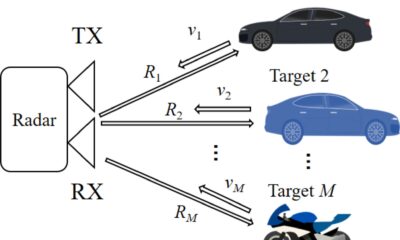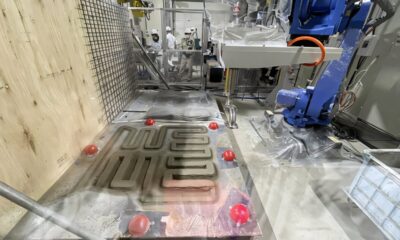Tech
Unreliable public charging stations deter many potential electric vehicle buyers
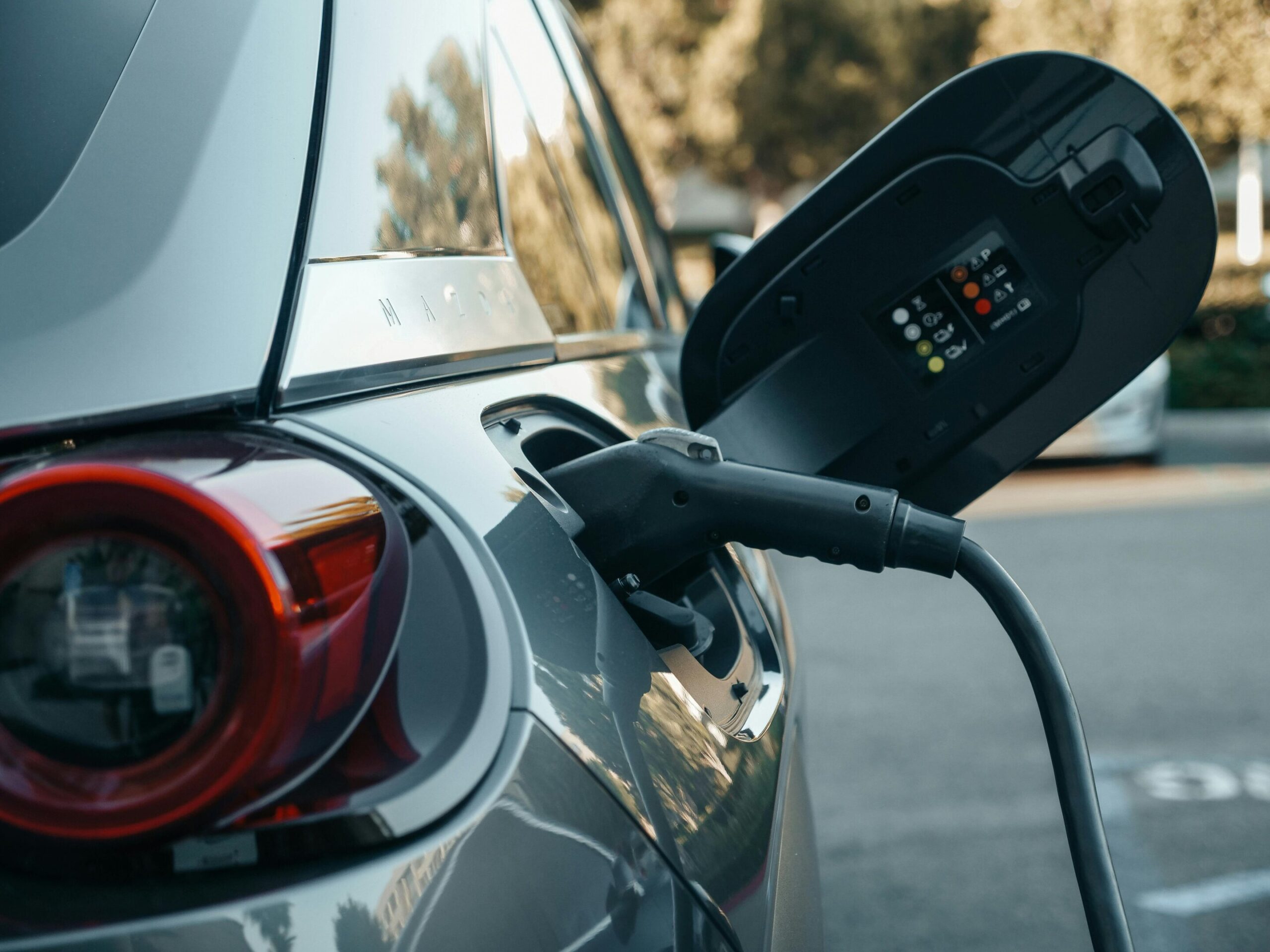
Public electric vehicle charging stations in America have a bad reputation. They’re notorious for breaking down, charging at a snail’s pace, refusing customer payment and leaving drivers stranded without juice.
Advocates for electric vehicles, or EVs, worry that reliability concerns are hampering adoption at a critical moment in the campaign to reduce greenhouse gas emissions, but data on the topic is limited.
To address this problem, researchers at the University of Washington designed a survey to tease out exactly how much a car owner’s perception of public charging reliability influences their willingness to buy their first EV. The research was published in Transport Policy.
The team created a series of hypothetical scenarios to study the factors that might nudge a skeptical shopper towards an EV over a gasoline-powered car, including vehicle and gas prices, driving range and public charging access.
The results were dramatic. Participants with a negative view of public charging were much less likely to choose an EV than those with a moderate view. It took some serious hypothetical improvements to offset those negative perceptions: The EV needed to be discounted 30%, have 366 extra miles of range or there needed to be 30,000 additional public charging stations.
“No one knew how much charger reliability was coloring the decisions of prospective EV buyers,” said senior author Don MacKenzie, a UW associate professor of civil and environmental engineering.
“I was not at all surprised by the direction of the response. What surprised me was the size. These were monster results. This is a warning for the whole industry.”
The results come at a tenuous time for EV adoption in America. The market continues to grow, but political factors like the end of federal tax incentives are complicating sales outlooks. The federal government is also challenging California’s plan to phase out gas car sales, which could threaten similar efforts in Washington and several other states.
The state of public charging isn’t inspiring confidence in buyers, either. Studies in recent years have shown significant reliability issues with public networks. There are signs that the situation is improving, and home charging is an option for some drivers, but the threat of slow and flaky public chargers remains a powerful deterrent for anyone venturing outside their “home range.”
“We know there’s a lot of range anxiety out there,” said lead author Rubina Singh, a UW doctoral student of civil and environmental engineering. “EV owners often tolerate charging problems, while newcomers are less aware of the hurdles. If trust erodes, adoption could slow.”
The team found it tricky to measure the link between station reliability and buyer behavior because there weren’t obvious real-world groups to compare. Tesla’s stations get consistently higher marks than other networks, but Tesla cars and their owners are too different in other ways to make for a useful comparison. Simply asking people for their thoughts about charging may produce answers that are colored by their overall feelings about EVs.

Instead, the researchers turned to hypothetical scenarios. They recruited roughly 1,500 participants who had never owned an EV and surveyed them in three groups, asking the first to picture a world where public charging is a mess, the second to imagine a charging utopia and the third to simply give their preexisting opinions about charging.
Each group then went “shopping.” Each round of the survey, participants chose between an EV and a comparable gas-powered car. The researchers tweaked variables such as vehicle cost, gas prices and range, and trends emerged over several rounds.
Participants with a negative view of public charging demanded strikingly large concessions before choosing an EV. In some cases, the adjustment needed was nonsensically large.
“People wanted a 366-mile increase in range before they bought an EV,” MacKenzie said. “Lots of EVs don’t even have a 366-mile range today. That’s obviously not a practical demand. But it illustrates the strength of this effect.”
There were other surprises in the data, too.
“The results were basically the same for people who have access to home charging and people who don’t,” Singh said. “So even if they wouldn’t actually have to rely on the charging network, respondents were still concerned about reliability.”
As the auto industry works to bring EVs into the mainstream, these findings are both a warning and an invitation for further study. Little is known, Singh said, about what specific improvements would have the greatest impact on public charging perception. Asking the right questions could help stakeholders throughout the industry figure out where to invest.
“What are the specific factors that would convince skeptics?” she said. “Does a station need to be online 90% of the time to improve a user’s perception? Or 95%? Or 99%? Or would improving the point of sale system help more? Where do you put your dollars to have the greatest effect on public perception?”
What’s clear, MacKenzie said, is that reliability must be prioritized as charging networks expand.
“This is the Achilles’ heel right now for EVs,” he said.
“If we push the broader market towards EVs, or if it grows on its own before we can fix this problem, it’s really bad news for continued growth. I think it could engender a real backlash. It only takes one bad experience to lose a customer. That’s a big danger for EV adoption.”
More information:
Rubina Singh et al, Poor reliability of public charging stations can impede the growth of the electric vehicle market, Transport Policy (2025). DOI: 10.1016/j.tranpol.2025.06.026
Citation:
Unreliable public charging stations deter many potential electric vehicle buyers (2025, September 23)
retrieved 23 September 2025
from https://techxplore.com/news/2025-09-unreliable-stations-deter-potential-electric.html
This document is subject to copyright. Apart from any fair dealing for the purpose of private study or research, no
part may be reproduced without the written permission. The content is provided for information purposes only.
Tech
New algorithm enhances Doppler resolution of unmanned vehicle radars

A research team has developed an extrapolation-based Doppler resolution enhancement algorithm for frequency modulated continuous wave radars. The algorithm improves system performance, offering an advancement that is superior to existing ultra-high-resolution technologies.
The findings are published in the Journal of Electrical Engineering & Technology. The team was led by Sang-dong Kim and Bong-seok Kim, affiliated with the DGIST Division of Mobility Technology, in collaboration with a team led by Professor Youngdoo Choi, affiliated with the Republic of Korea Naval Academy (ROKNA).
Improving radar accuracy without extra hardware
This research introduces a technology that improves radar detection accuracy without the need for additional complex computations or hardware. The technology is expected to contribute to enhancing radar system performance on various intelligent unmanned platforms such as unmanned aerial vehicles (UAVs), unmanned ships, and autonomous vehicles.
Conventional radar systems analyze the Doppler effect to determine the velocity of a target, but the fast Fourier transform (FFT)-based approach has limitations regarding resolution (i.e., the accuracy of velocity discrimination). To address this, the joint DGIST–ROKNA research team applied a signal extrapolation technique and has proposed a new algorithm that enhances Doppler resolution without extending observation time.
Performance gains and real-world applications
The proposed method successfully reduces the root mean square error of velocity estimation by up to 33% and decreases the target miss rate by up to 68%, representing a substantial improvement over the conventional approach. Notably, the proposed method maintains the same computational complexity level as the conventional FFT method, thereby simultaneously achieving fast processing speed and high efficiency.
This technology can effectively solve the problem of signal overlap between targets moving at similar velocities, particularly when UAVs or radar systems detect multiple objects simultaneously. It can therefore greatly enhance the ability to distinguish closely spaced targets and improve detection accuracy, marking a new milestone in the advancement of high-resolution target detection technology.
Additionally, the technology is highly regarded for its industrial applicability because it requires no additional hardware resources and features a simple computational structure that enables real-time implementation.
Sang-dong Kim, principal researcher at the Division of Mobility Technology (concurrently serving the interdisciplinary engineering major), said, “This study demonstrates an improvement in both the efficiency and precision of radar signal processing, enabling more accurate target detection without the need for additional equipment. It is expected to evolve into a key technology for defense, autonomous driving, and unmanned systems.”
More information:
Youngdoo Choi et al, Doppler Resolution Enhancement Algorithm Based on Extrapolation for FMCW Radar, Journal of Electrical Engineering & Technology (2025). DOI: 10.1007/s42835-025-02453-6
Citation:
New algorithm enhances Doppler resolution of unmanned vehicle radars (2025, November 11)
retrieved 11 November 2025
from https://techxplore.com/news/2025-11-algorithm-doppler-resolution-unmanned-vehicle.html
This document is subject to copyright. Apart from any fair dealing for the purpose of private study or research, no
part may be reproduced without the written permission. The content is provided for information purposes only.
Tech
Spray 3D concrete printing simulator boosts strength and design
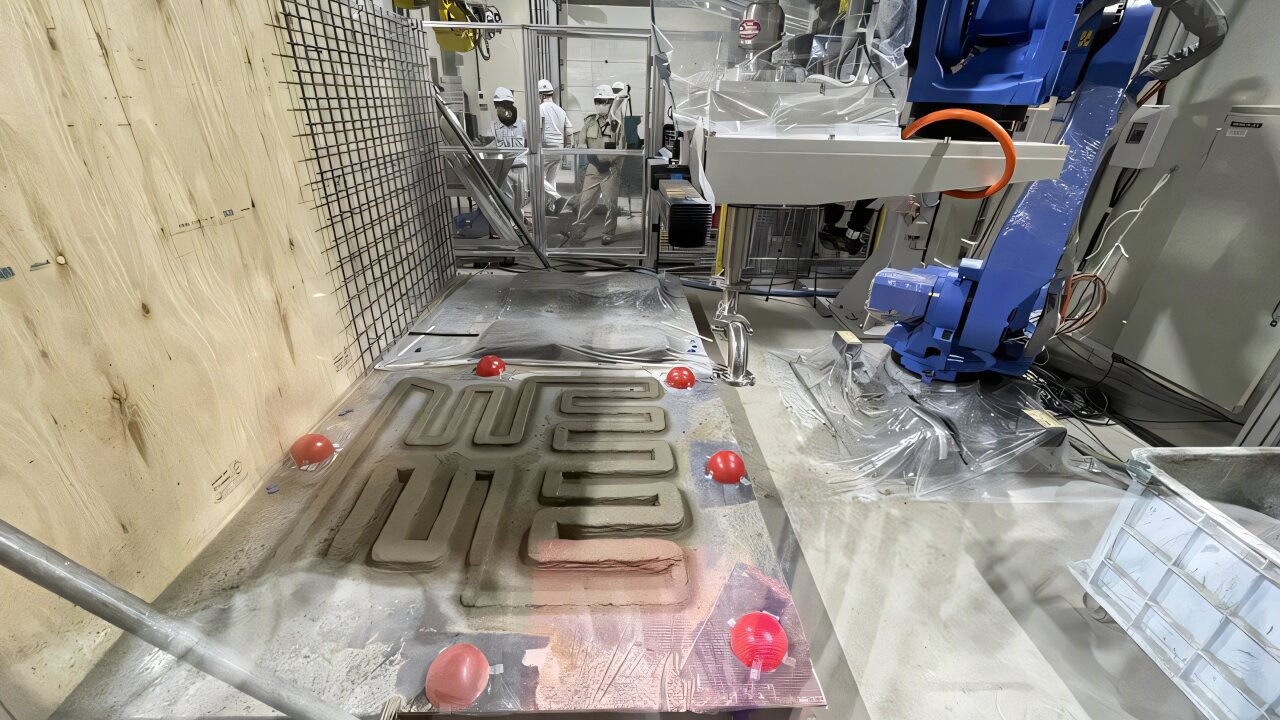
Concrete 3D printing reduces both time and cost by eliminating traditional formwork, the temporary mold for casting. Yet most of today’s systems rely on extrusion-based methods, which deposit material very close to a nozzle layer by layer. This makes it impossible to print around reinforcement bars (rebars) without risk of collision, limiting both design flexibility and structural integrity of builds.
Kenji Shimada and researchers in his Carnegie Mellon University’s Computational Engineering and Robotics Laboratory (CERLAB), are breaking through that limitation with a new simulation tool for spray-based concrete 3D printing.
“Spray-based concrete 3D printing is a new process with complicated physical phenomena,” said Shimada, a professor of mechanical engineering. “In this method, a modified shotcrete mixture is sprayed from a nozzle to build up on a surface, even around rebar.”
The ability to print freely around reinforcement is especially important in places like Japan and California, where earthquakes are an imminent threat and structural strength is critical.
“To make this technology viable, we must be able to predict exactly how the concrete will spray and dry into the final shape,” Shimada explained. “That’s why we developed a simulator for concrete spray 3D printing.”
The new simulator can model the viscoelastic behaviors of shotcrete mixtures, including drip, particle rebound, spread, and solidification time. This way, contractors can assess multiple printing paths based on a CAD design with the simulator to evaluate whether spray 3D printing is a feasible fabrication technique for their structure.
The team traveled to Tokyo, Japan, where Shimizu Corporation already operates spray 3D printing robots to validate their model. In the first test, the team focused on the simulator’s ability to predict shape based on the speed of the nozzle’s movement. With 90.75% accuracy, the simulator could predict the height of the sprayed concrete. The second test showed that the simulator could predict printing over rebar with 92.3% and 97.9% accuracy for width and thickness, respectively.
According to Soji Yamakawa, a research scientist in Shimada’s lab and the lead author of the team’s research paper published in IEEE Robotics and Automation Letters, a simulation of this kind would typically take hours, if not days, to run.
“By making wild assumptions, we were able to successfully simplify a super complex physics simulation into a combination of efficient algorithms and data structures and still achieved highly realistic output,” Yamakawa said.
Future work will aim to increase accuracy by identifying environmental parameters like humidity, optimizing performance, and adding plastering simulation to create smoother finished products.
“There are still so many applications and technologies that we can develop with robotics,” said Kyshalee Vazquez-Santiago, a co-author of the paper and a mechanical engineering Ph.D. candidate leading the Mobile Manipulators research group within CERLAB.
“Even in concrete 3D printing, we are working with an entirely new type of application and approach that has so many advantages but leaves so much room for further development.”
More information:
Soji Yamakawa et al, Concrete Spray 3D Printing Simulator for Nozzle Trajectory Planning, IEEE Robotics and Automation Letters (2025). DOI: 10.1109/lra.2025.3615038
Citation:
Spray 3D concrete printing simulator boosts strength and design (2025, November 11)
retrieved 11 November 2025
from https://techxplore.com/news/2025-11-spray-3d-concrete-simulator-boosts.html
This document is subject to copyright. Apart from any fair dealing for the purpose of private study or research, no
part may be reproduced without the written permission. The content is provided for information purposes only.
Tech
The Nike x Hyperice Hyperboot Is $200 Off
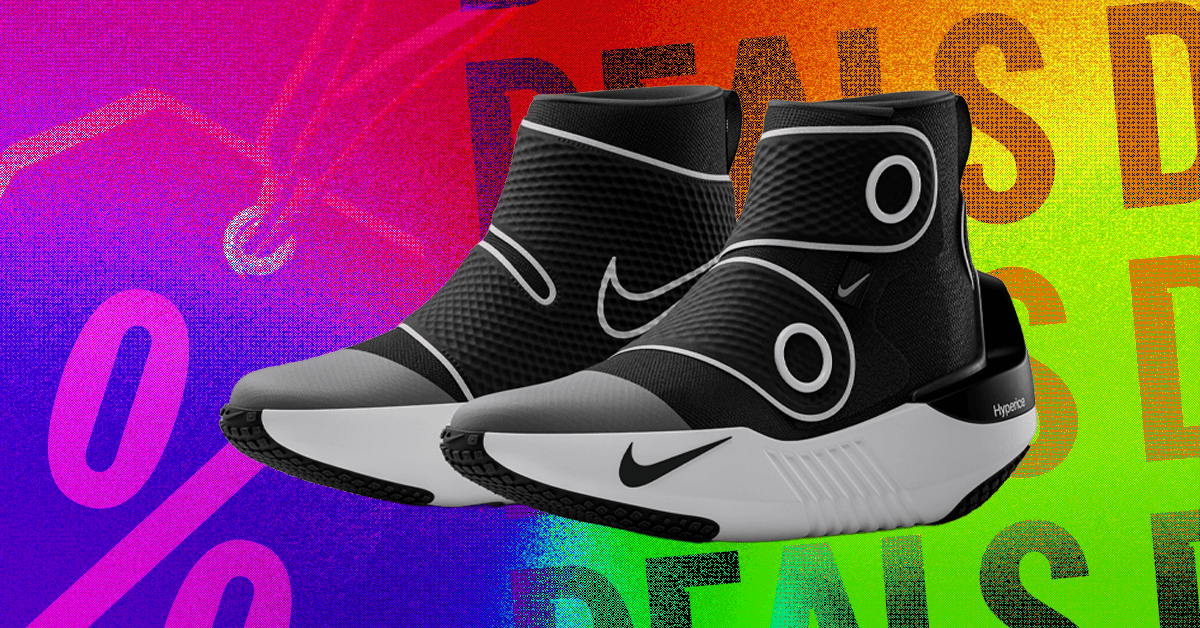
For the first time, the Nike x Hyperice Hyperboot is on sale. The recovery boots are $200 off—normally $899, now $699—through December 1. They’re also HSA/FSA eligible. Normally, I’d point you toward the Normatec 3 Legs; they cost the same and offer more leg coverage, but at this discounted price, the Hyperice Hyperboot’s portability and comfort are a hard deal to pass up.
The discount is part of Hyperice’s Black Friday sale, which runs from November 20 to December 1. Stay tuned, as we’ll be tracking all the best Hyperice holiday deals as they roll out.
Hyperice’s Normatec recovery boots are a favorite among athletes, but their one downside is that you have to stay put while using them. The Hyperboots pack the same air compression tech as the Normatecs, but in a wearable, high-top design, courtesy of Nike. You can get a foot massage while you do the dishes.
Each boot offer three levels of compression and heat (up to 125 degrees Fahrenheit), adjustable via a built-in control panel. The two sync automatically when worn together, and battery life is about 90 minutes per charge. They’re IP54 rated, meaning they’re dust- and splash-resistant, but not waterproof.
Reviewer Kristin Canning tested the boots on her drive back home after a day of snowboarding and said it was a game changer. She could flush out lactic acid and thaw her toes before she even got home. While they’re recovery boots, they do have a warmup mode that makes them just as useful before workouts to get your blood flowing.
Canning did point out that the air pumps make an airplane-like hum, but it’s nothing too overwhelming. If you’ve already bought your season pass and are doing your one-leg squats and hip rotations, there’s no better time to grab a pair of the boots that will keep your legs fresh all the way through March.
Power up with unlimited access to WIRED. Get best-in-class reporting and exclusive subscriber content that’s too important to ignore. Subscribe Today.
-

 Tech1 week ago
Tech1 week agoCISOs in court: Balancing cyber resilience and legal accountability | Computer Weekly
-

 Fashion1 week ago
Fashion1 week agoCoach reconnects with Bank & Vogue for upcycled bags using corduroy
-

 Business1 week ago
Business1 week agoFirst new Amazon electric heavy goods vehicles hit UK roads
-

 Sports1 week ago
Sports1 week agoNFL broadcaster Cris Collinsworth makes government shutdown joke as Seahawks clobber Commanders
-

 Fashion1 week ago
Fashion1 week agoGermany’s Adidas achieves highest-ever quarterly sales in Q3 2025
-

 Sports1 week ago
Sports1 week agoSources: QB Daniels dislocated elbow in loss
-

 Business1 week ago
Business1 week agoIndia, New Zealand Hold 4th FTA Talks In Auckland On Trade Rules
-

 Tech1 week ago
Tech1 week agoNokia, Rohde & Schwarz collaborate on AI-powered 6G receiver | Computer Weekly


